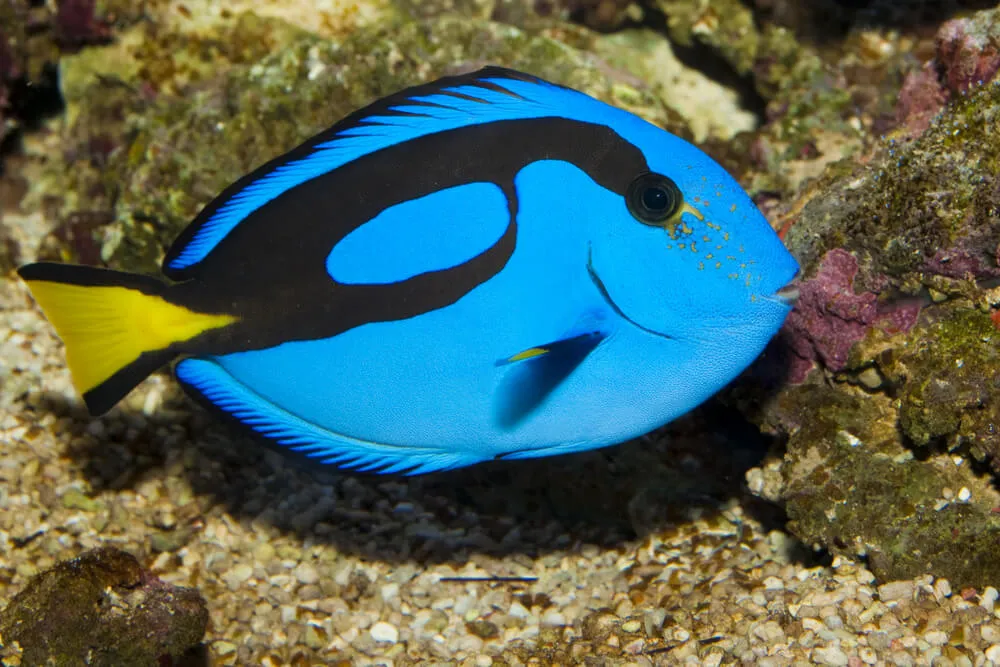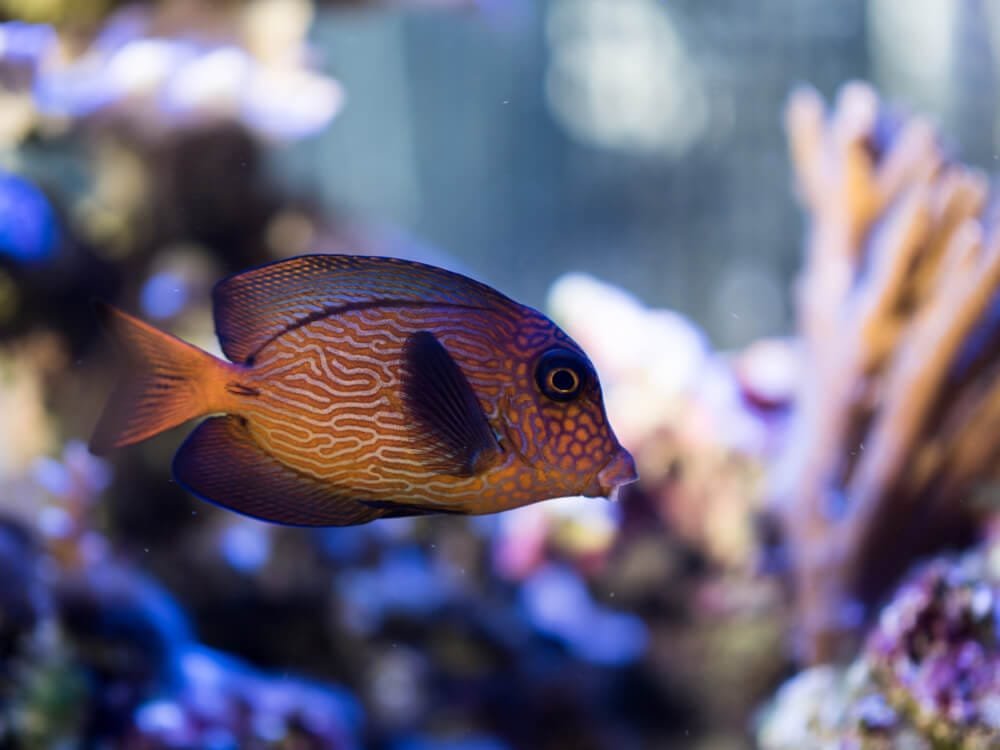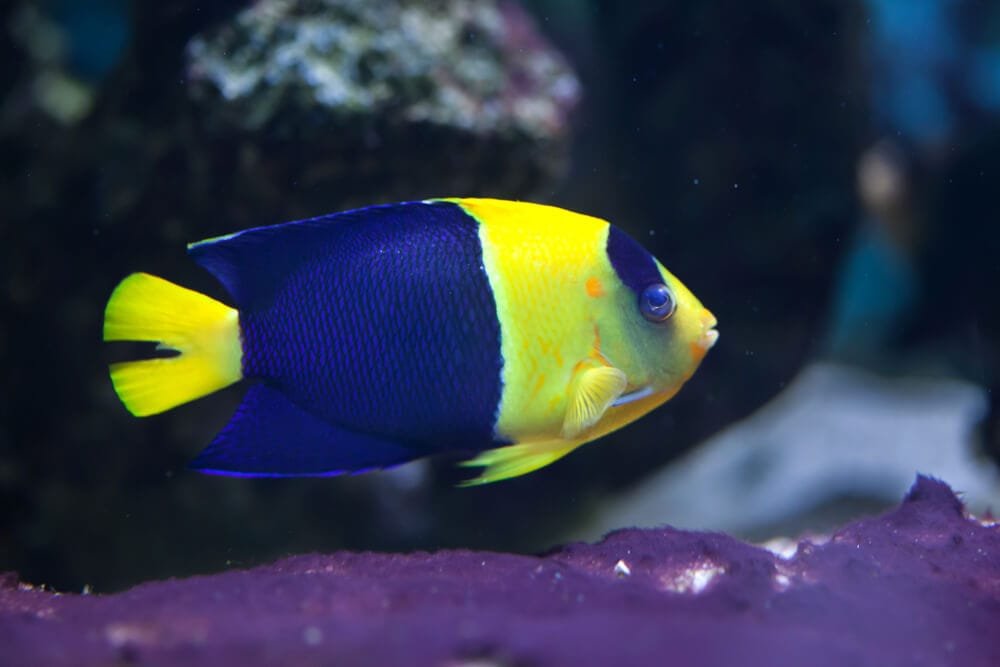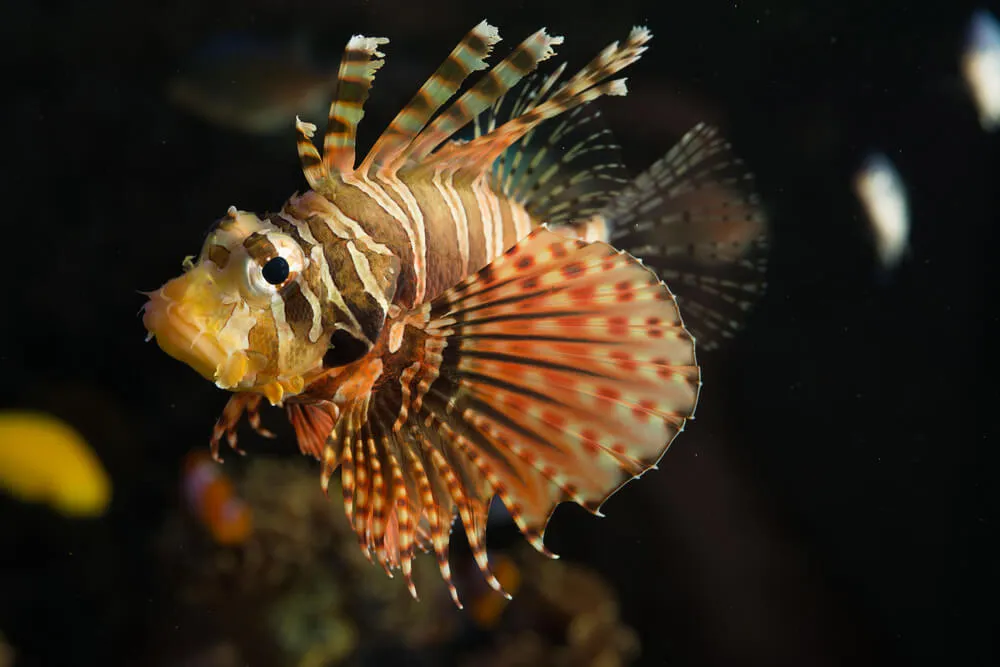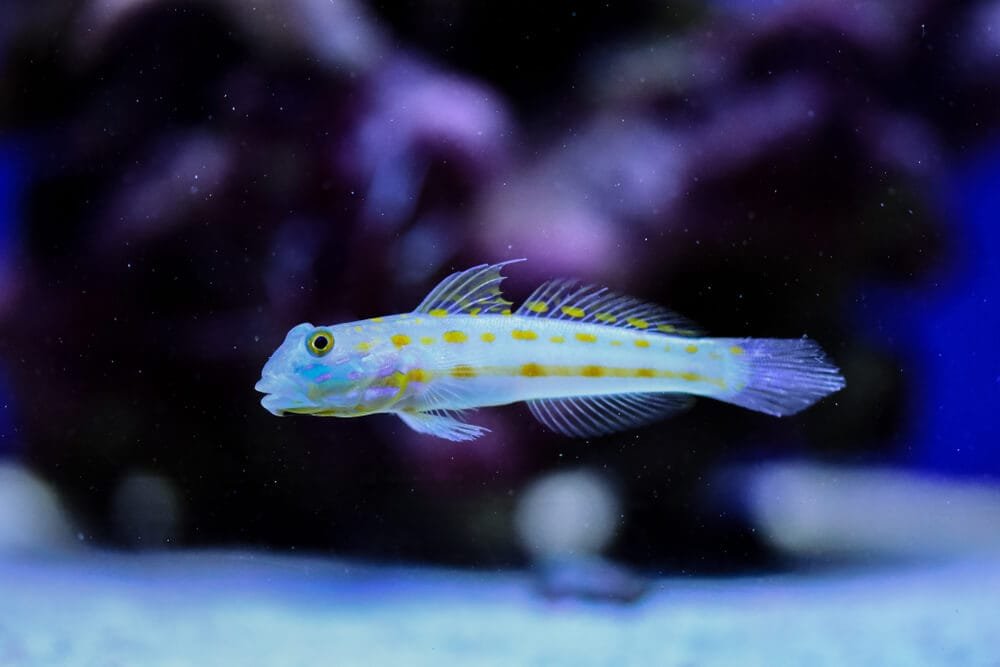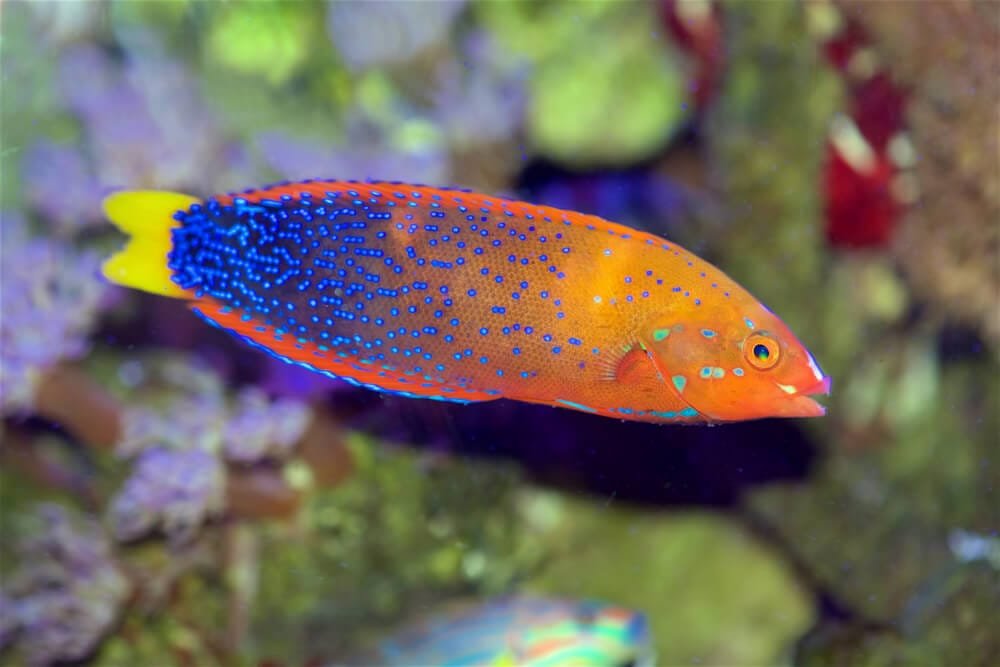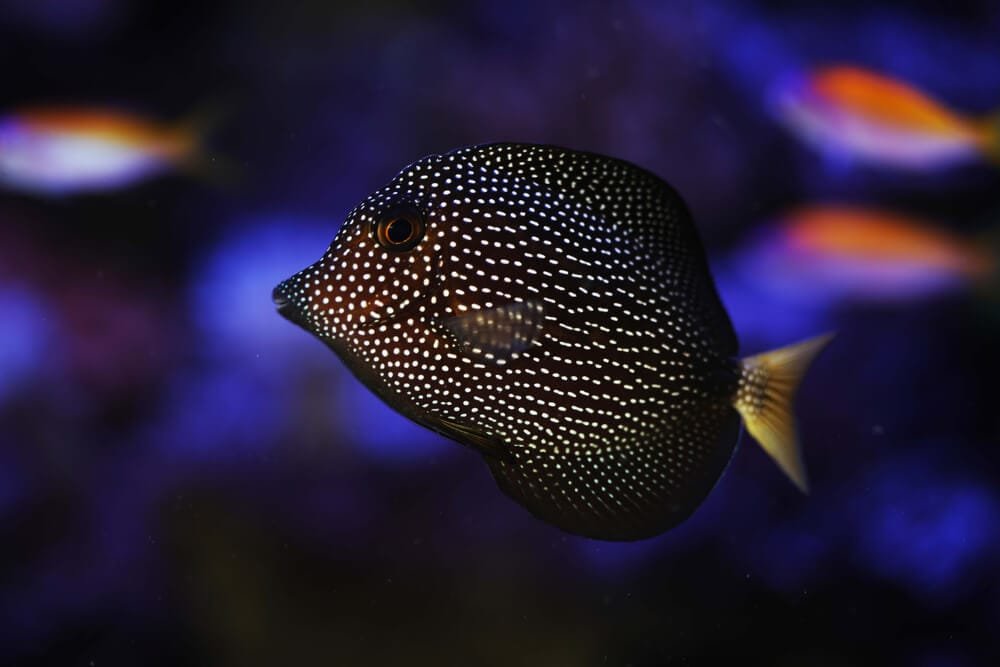Chalk Bass Species: Care Tips and Tank Compatibility
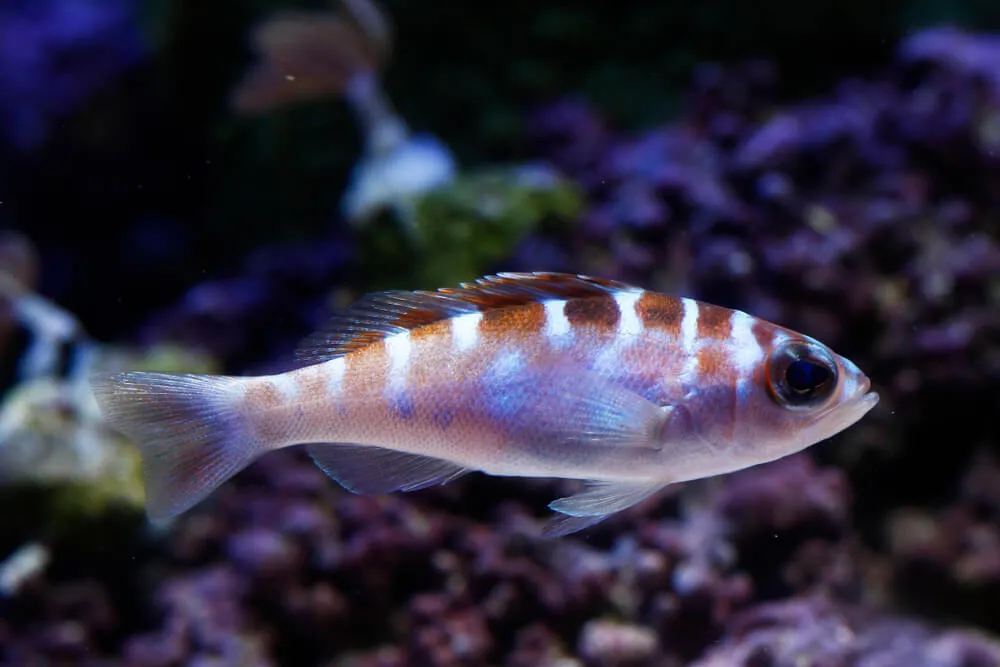
Are you ready to take a dip into the colorful world of the ocean? Meet our delightful friend, the Chalk Bass. With its striking blue and yellow stripes, this charming fish is sure to catch your eye. Known for its peaceful nature, the Chalk Bass is a popular choice among aquarium enthusiasts. Join us as we explore the unique characteristics and fascinating behavior of this captivating underwater creature.
Physical Description
The Chalk Bass is a small and fascinating fish that possesses a unique set of characteristics. It typically measures around 2.5 inches in length, making it one of the smaller species in the marine world. Despite their diminutive size, Chalk Bass are known for their vibrant and eye-catching coloration. Their bodies display a stunning combination of bright yellow and white, with beautiful vertical stripes extending from their dorsal fin to their tail. They also have a dark spot near their pectoral fin, which adds to their distinct appearance. The overall body shape of the Chalk Bass is slender and elongated, with a slightly rounded head and a streamlined body. Their fins, especially the caudal fin, are slightly rounded, giving them excellent maneuverability in the water.
Habitat
The natural range of the Chalk Bass includes the warm waters of the Western Atlantic Ocean, particularly in the regions stretching from Florida to Brazil. Within this range, they are commonly found around coral reefs and rocky areas, where they seek shelter and protection. Chalk Bass prefer environments with ample hiding spots, such as crevices and caves, which allows them to feel secure and safe. While they primarily reside in shallow waters, they can occasionally be found at depths of up to 100 feet, preferring areas with moderate water movement.
Behavior
Chalk Bass are social creatures, often forming small groups or shoals. Within these groups, they establish a hierarchical social structure, with a dominant male at the top and multiple females and subordinate males beneath. This social organization is essential for maintaining order and minimizing aggression within the shoal. The dominant male will maintain his position through aggressive displays and active defense of his territory.
Feeding Habits
Chalk Bass are carnivorous in nature, feeding primarily on small invertebrates such as shrimp, copepods, and amphipods. Their unique hunting strategy involves closely following the reef structure, actively searching for food amongst the coral and rocky surfaces. They have excellent eyesight, allowing them to spot and capture their prey efficiently. Chalk Bass are agile swimmers and can quickly change direction to catch their elusive prey.
Reproduction
In terms of reproduction, Chalk Bass follow an interesting and well-coordinated breeding behavior. Females will lay adhesive eggs on the underside of rocky surfaces, such as ledges or undersides of corals. Once the eggs are laid, the male takes on the role of guardian, fertilizing them and ensuring their safety. He remains diligent in protecting the eggs and will chase away any potential predators or intruders until the eggs hatch.
Interaction with Humans
Popularity in the Aquarium Trade
The Chalk Bass is highly sought after in the aquarium trade due to its striking appearance and manageable size. Their vibrant coloration makes them a beautiful addition to any saltwater aquarium, and their small size makes them suitable for tanks of varying sizes. Additionally, their relatively peaceful nature and adaptability to captive environments make them a favorable choice for aquarium enthusiasts. However, it is essential to ensure that they are provided with appropriate living conditions and compatible tank mates to ensure their well-being.
Conservation Status
As of now, the Chalk Bass is not listed as a threatened or endangered species. However, it is crucial to monitor their population and preserve their natural habitats to prevent any future decline in numbers. The health of coral reefs and rocky areas, which serve as their primary habitat, greatly impacts the overall well-being of the Chalk Bass population. Conservation efforts should focus on promoting sustainable fishing practices, minimizing pollution, and protecting coral reef ecosystems to safeguard this captivating species.
Related Species
Family and Genus
The Chalk Bass belongs to the family Serranidae and the genus Serranus. Within this family, there are numerous other bass species that share similar characteristics and behaviors. Some examples include the Harlequin Bass (Serranus tigrinus) and the Duskytail Bass (Serranus tortugarum). These species often inhabit similar environments and exhibit comparable physical attributes and behavior patterns. Studying the various members of the Serranus genus can provide further insights into the diversity and habits of these fascinating fish.
Similar Species
Though the Chalk Bass possesses unique coloration and patterns, there are other bass species that may exhibit superficial resemblances. The Blue-striped Gregories (Pseudochromis dilectus) and the Yellow Pseudochromis (Pseudochromis fuscus) share some similarities in their coloring, but their body shape and structure vary significantly. It is important to distinguish between these species to avoid any misconceptions or confusion.
Interesting Facts
Camouflage Abilities
One of the remarkable traits of the Chalk Bass is its impressive camouflage abilities. The black spot near its pectoral fin, known as an eyespot, helps to confuse potential predators. This eyespot resembles a larger fish’s eye, diverting attention away from the actual location of the Chalk Bass’s true eyes. By using this clever strategy, they can effectively blend into their environment, reducing the risk of predation.
Unique Breeding Behavior
The Chalk Bass’s breeding behavior is notable for its division of labor between males and females. Once the eggs are laid, the female’s responsibility is complete, and the male takes charge of guarding and caring for them. This level of parental care is uncommon in the marine world, and it showcases the Chalk Bass’s commitment to ensuring the survival of its offspring.
Diet
Predator-Prey Relationships
Chalk Bass utilize their agility and keen eyesight to prey on small invertebrates such as shrimp, copepods, and amphipods. These prey species play crucial roles in maintaining the balance of the marine ecosystem, and the Chalk Bass is an important contributor to the predation pressure on these populations. By controlling the abundance of these prey species, the Chalk Bass helps prevent their overpopulation, which could have detrimental effects on coral reefs and rocky habitats.
Food Sources in the Wild
In their natural habitat, Chalk Bass have access to a diverse range of food sources. They primarily feed on various small invertebrates, including shrimp, copepods, and amphipods. These invertebrates are commonly found amongst the reefs and rocks, providing the Chalk Bass with a plentiful and accessible source of nutrition. The availability of these food sources ensures that the Chalk Bass can thrive and maintain their energy levels for reproduction and survival.
Predators
Natural Predators
As with any species in the marine environment, the Chalk Bass faces numerous natural predators. Larger predatory fish, such as groupers and snappers, are known to prey on the Chalk Bass. Additionally, some species of birds, such as certain seagulls and pelicans, may target them when they venture closer to the ocean’s surface. The need for effective predator avoidance strategies is crucial for the Chalk Bass’s survival.
Predator Avoidance
To avoid falling prey to natural predators, the Chalk Bass utilizes several strategies. Their vibrant coloration helps them blend among the brightly colored corals and rocks, making it harder for predators to spot them. Additionally, their small size and agility allow them to navigate through tight spaces and hide in crevices, which can provide effective protection from larger, less maneuverable predators.
Reproductive Strategies
Courtship Behavior
The courtship behavior of the Chalk Bass is a fascinating process to observe. Males will display their dominance and fitness by engaging in various physical and visual displays. These displays often involve flaring their fins, intensifying their coloration, and performing rapid movements to attract the attention of females. Successful courtship displays are usually followed by the formation of a pair bond between the male and the chosen female.
Nesting
Once a pair bond is established, the female Chalk Bass will lay adhesive eggs on the undersides of rocks or ledges. This location provides protection and a suitable substrate for the eggs to develop. The male will then take on the role of guardian, diligently protecting the eggs from any potential threats and ensuring their survival until they hatch. This division of labor between the male and female highlights their strong parental instincts and commitment to their offspring’s well-being.
Conservation Efforts
Threats
While the Chalk Bass is not currently listed as a threatened species, its population may face potential threats in the future. Destructive fishing practices, such as the use of dynamite or cyanide, can severely damage their fragile habitats and deplete their numbers. Pollution, including runoff from land-based activities, also presents a threat to their well-being and the health of their habitats. Climate change and ocean acidification can impact the delicate balance of coral reef ecosystems, affecting the availability of food sources and suitable breeding conditions for the Chalk Bass.
Protection Measures
To ensure the long-term survival of the Chalk Bass, active conservation measures are necessary. Implementing sustainable fishing practices that limit the capture of Chalk Bass and protect their habitats is essential. Collaborative efforts between local communities, governments, and conservation organizations can help raise awareness and promote responsible fishing practices. Protecting and preserving the health of coral reefs is crucial, as these ecosystems serve as vital habitats for the Chalk Bass and other marine organisms. Furthermore, reducing pollution and mitigating the impacts of climate change can contribute to the overall well-being of the Chalk Bass population and their habitat.
